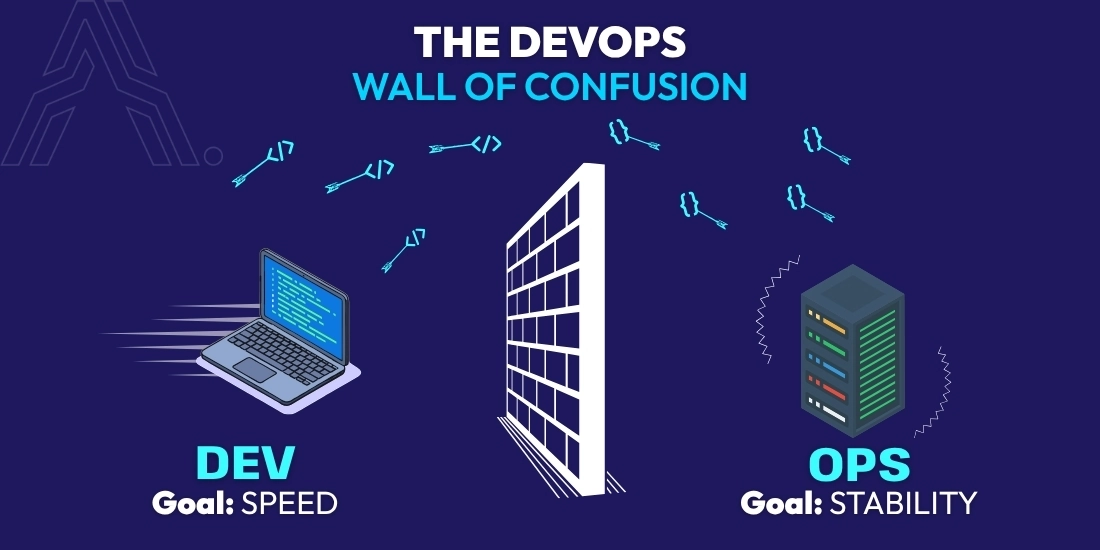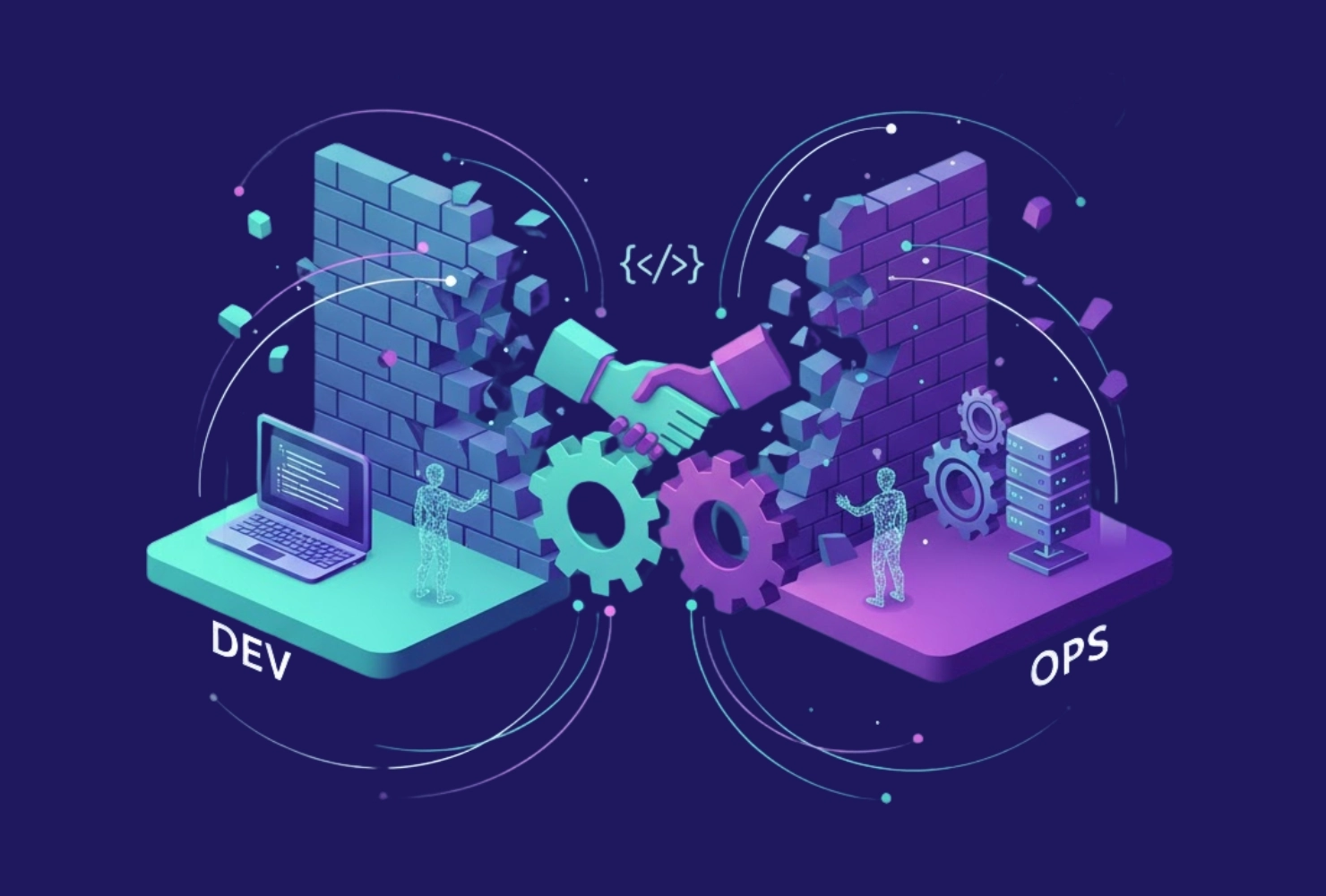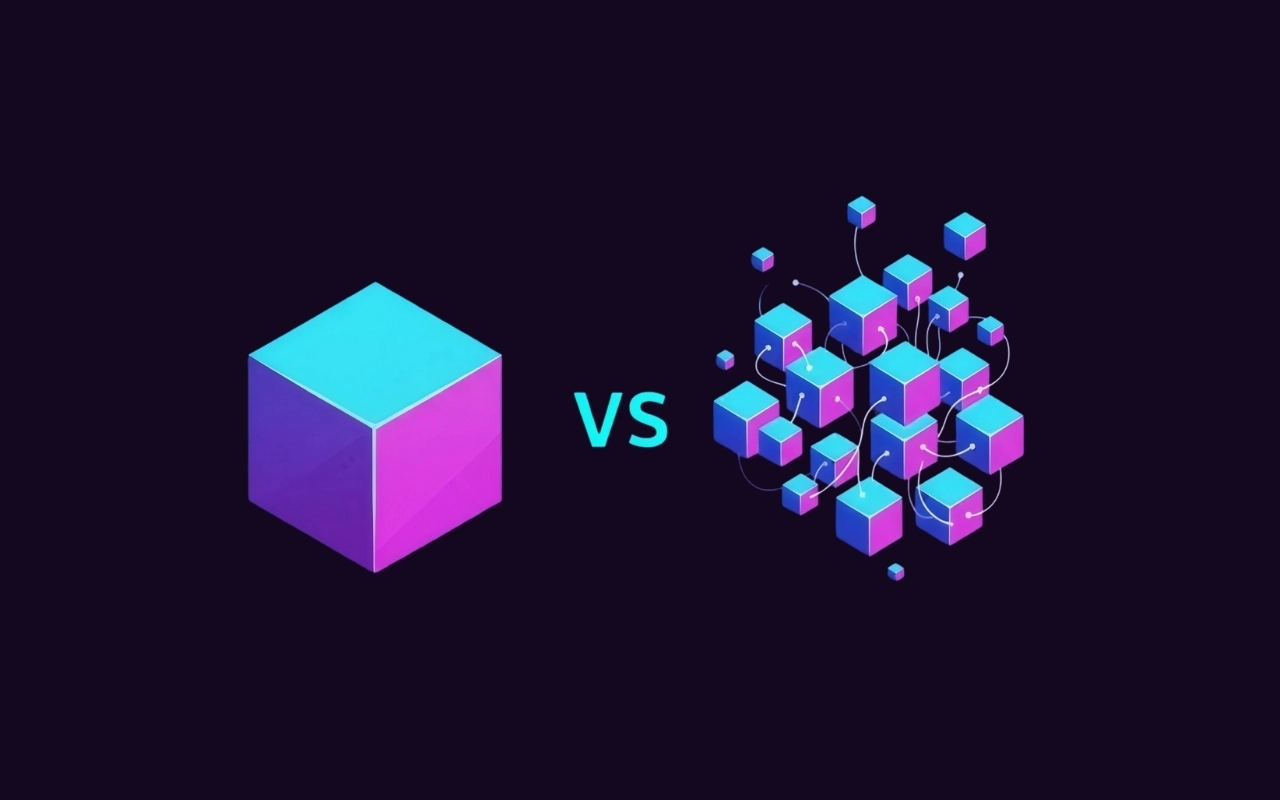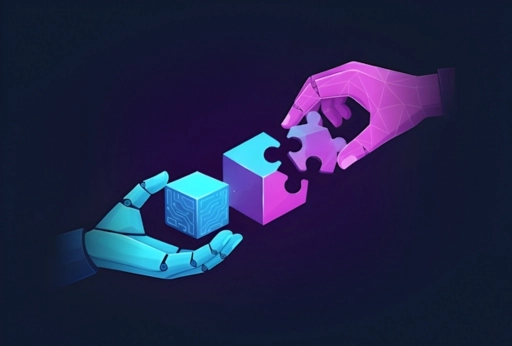You’re in a planning meeting, and someone from the tech team says, “To hit that deadline, we just need to improve our DevOps.”
Everyone nods sagely. But as the conversation moves on, you’re left wondering, “what is DevOps,” anyway? Is it a new piece of software? A specific person? And why does it always sound expensive?
You’re not alone. It’s one of the most powerful, and most misunderstood, concepts in modern business.
So, Let’s clear this up in plain English. This is a 5-minute guide for executives that explains what DevOps is, why it’s not just a person, and what it actually does for your bottom line.
That Giant “Wall of Confusion”
The easiest way to get what DevOps is is to look at the tech world before it.
In most companies, the tech world functioned in two camps with completely opposite goals.
- You have the Developers. Their job is to build new features. In fact, their performance hinges on speed. You, your product managers, and your marketing team are always asking them, “When will it be done? Can we go faster?”
- Then, you have the Operations (Ops). Their job is to keep the lights on. Similarly, their performances hinges on stability. Their worst nightmare is a 3 AM phone call because the website is down. They hate change because change is risky.
Right there, you have a built-in conflict: Companies pay Dev to make change, and they pay Ops to prevent change.
This creates what we call the “Wall of Confusion.”
The Dev team builds a new feature, finishes it, and then “throws it over the wall” to the Ops team to release. When the site inevitably breaks, the blame game begins. Ops says, “The new code is broken!” Dev says, “It worked fine on my machine!”
The result? Ultimately, your great new ideas get stalled in a bottleneck of finger-pointing and fear, and your customers end up waiting.
The Solution: So, What Is DevOps? (Hint: It’s Not a Person)
Here’s the single most important thing to know:
DevOps is not a person, a role, or a single piece of software.
At its heart, DevOps is a cultural philosophy that tears down that wall of confusion.
But in its literal sense, DevOps is an amalgamation of tools, practices, and a cultural manifestation that acts as a means of integrating and automating processes between both a business’ Software Development and IT Operations teams.
It’s a movement that says, “What if we make Dev and Ops one single team?” Instead of having opposite goals, they get one shared, non-negotiable goal:
Deliver high-quality, reliable software to your customers… fast.
That’s it. That’s the core idea.
When “Dev” and “Ops” are on the same team, their entire mindset shifts.
- The developer no longer just “throws code over the wall.” They’re now responsible for how that code runs in the real world.
- The operations expert no longer just says “no” to change. They now help build automated systems that make change safe and repeatable.
It’s a culture that thrives on collaboration, shared responsibility, and (most importantly) automation.

The Engine of DevOps Explained (The CI/CD Pipeline)
“Okay,” you’re thinking, “a ‘culture of collaboration’ sounds great. But how do you do that? How does it actually work?”
You build an engine for it. In DevOps, this engine is called the CI/CD Pipeline.
Literally, it’s the fully automated assembly line for your software. It’s the practical, automated process that brings the DevOps culture to life. Think of it as an automated process that builds, tests, and deploys every new piece of code, getting it from the developer’s computer to your customers safely, quickly, and without the risk of human error.
This might be the only “tech” term you need to know, but you can understand this process best with two simple analogies.
Part 1: The ‘Master Chef’ (Continuous Integration, or CI)
The first part of the pipeline, CI (Continuous Integration), acts as that automated “quality check.”
- The Old Way: Imagine you’re making a giant pot of soup with 50 ingredients. You wait until all 50 ingredients are in the pot before you finally taste it. You take one sip and… something’s horribly wrong. Is it the salt? The broth? The old carrots? You have no idea which of the 50 ingredients ruined the soup.
- The DevOps Way (CI): Continuous Integration is like having a master chef taste-test every single ingredient before it goes into the pot. The moment a developer finishes a tiny piece of code (one ingredient), the pipeline automatically builds and tests it, which means finding tiny bugs in minutes.
This simple shift changes everything. Your team finds tiny bugs in minutes (when they’re cheap and easy to fix), not disastrous problems weeks later (when they’re expensive and have already been buried by 49 other “ingredients”).
Part 2: The ‘Automated Conveyor Belt’ (Continuous Delivery, or CD)
The second part, CD (Continuous Delivery), handles the automated “release” process that takes over once the code passes all its tests.
- The Old Way: Your soup is finally ready. Now you have to manually ladle it into 1,000 different jars, screw on the lids, and stick on the labels by hand. Consequently, this is a slow, manual, all-hands-on-deck “release weekend.” It’s where spills happen, labels get put on upside down, and everyone is panicked.
- The DevOps Way (CD): Continuous Delivery is a fully automated conveyor belt. The moment your soup passes the “chef’s” taste test (CI), this automated system instantly and perfectly puts it in a jar, seals it, labels it, and places it on the delivery truck.
This means your great new ideas can go from a developer’s brain to your customers the same day, not next quarter. And it happens so reliably that you can do it 10, 20, or 50 times a day without breaking a sweat.
Stop building walls. Start building your engine.
See the Autonomous approach to DevOps—no jargon, just results.
Why You, the Executive, Should Care (The Business Benefits of DevOps)
This is the most important part. After all, an explanation of DevOps proves useless unless you tie it to the business benefits of DevOps. When your tech team adopts a true DevOps culture, here is what it means for you.
1. You Move Faster (Serious Speed-to-Market)
This is the biggest needle-mover. Your competition isn’t waiting. The CI/CD engine means you can launch new features, A/B test a new pricing page, or respond to customer feedback in days or even hours, not months. The industry-standard DORA State of DevOps Report (the exec-level benchmark) has proven that high-performing DevOps teams deploy on-demand instead of on a 6-week release schedule.
2. You’re More Reliable (Real Risk Reduction)
Remember the ‘3 AM panic’ release? That’s gone. Because you test in small, automated batches (CI) and release with an automated process (CD), your service is far more stable. Plus, when bugs do slip through (they always will), the team can fix them in minutes, not days. This means more uptime, happier customers, and a protected brand.
3. You’re Ready for Anything (Instant Disaster Recovery)
This one’s a big one. What happens if your main server, or even an entire data center, goes down? In the old model, that’s a “call everyone, we’re down for 24 hours” catastrophe. In a DevOps world, your team defines infrastructure as code (another part of that “automation” engine). This means you can rebuild your entire system in a new location, completely from scratch, in a matter of minutes, not days. In effect, It turns a potential company-ending disaster into a minor, recoverable blip.
4. You Save a Lot of Money (Lower Costs)
Here’s a simple fact: fixing a bug after it’s live is 100x more expensive than fixing it during development. DevOps catches bugs early, which is a massive, direct cost saving. On top of that, your engineers, often your most expensive and valuable talent, spend more time building new, revenue-generating features and less time fixing old, broken ones.
5. Your Team is Happier (Better Talent Retention)
This one is huge. Burnout is the #1 reason top tech talent quits. The old “Wall of Confusion” model runs on blame, stress, and burnout. The DevOps culture, however, thrives on collaboration, psychological safety, and success. A happier, more productive team stays longer and does better work.
Conclusion: From “What is DevOps?” to “This is Our Engine”
So, what is DevOps?
It isn’t a magic tool or a line item on a budget.
Instead, it’s a cultural shift that builds a business engine. It’s the engine that allows you to build, test, and release software better, faster, and more reliably than your competitors.
The next time you’re in that meeting and you hear “DevOps,” you’ll know exactly what it means. It’s not just another fancy tech term; indeed, it’s the modern blueprint for a competitive, resilient, and successful technology company.
And if you’re reading this feeling like your company’s engine might be stuck behind that “Wall of Confusion,” consequently, the first step isn’t to buy a tool, it’s to find your bottleneck. After all, It’s different for every business.
We can help with that. Schedule a free, 15-minute strategy call with our expert team. We’ll help you diagnose your unique bottleneck and map out the first step to building your own high-speed engine. No obligation, just expert advice.




